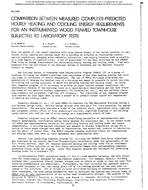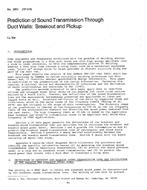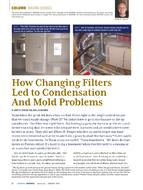The sample in the study consisted of 49 residential buildings measured during the heating season of 1987-1988 and 242 buildings measured during the heating season of 1988-1989. The sample included both small houses and blocks of flats, as well as natural, mechanical exhaust, and balanced ventilation systems. The air-exchange efficiency measured using the decay technique in the 49 buildings varied between 33% and 53%. The contaminant-removal effectiveness measured using the constant emission technique in the 49 buildings varied between 8% and 100%. The long- and short-term local air-exchange indicators in the master bedroom were measured using the decay technique (49 dwellings) and the PFT technique (49 plus 106 dwellings). The average values in various systems varied between 80% and 90%. The performance of the ventilation system in removing contaminants is described by the average turnover time, which was measured in the 291 dwellings using PFT technique. The average turnover times varied between 0.5 and 15.3 hours. The average values were 3.0 hours in the natural systems, 2.5 hours in the mechanical exhaust systems, and 2.5 hours in the balanced systems. The average turnover time in the single-family homes (3.0 hours) was higher than in the blocks of flats (2.1 hours).
KEYWORDS: ventilation, performance, domestic, housing, heating season, flats, natural ventilation, mechanical ventilation, balanced ventilation, air change rate, efficiency, decontaminating, bedrooms, measuring
Citation: Symposium, ASHRAE Trans. 1991, vol.97, part 2
Product Details
- Published:
- 1991
- Number of Pages:
- 10
- File Size:
- 1 file , 1.2 MB
- Product Code(s):
- D-18380


